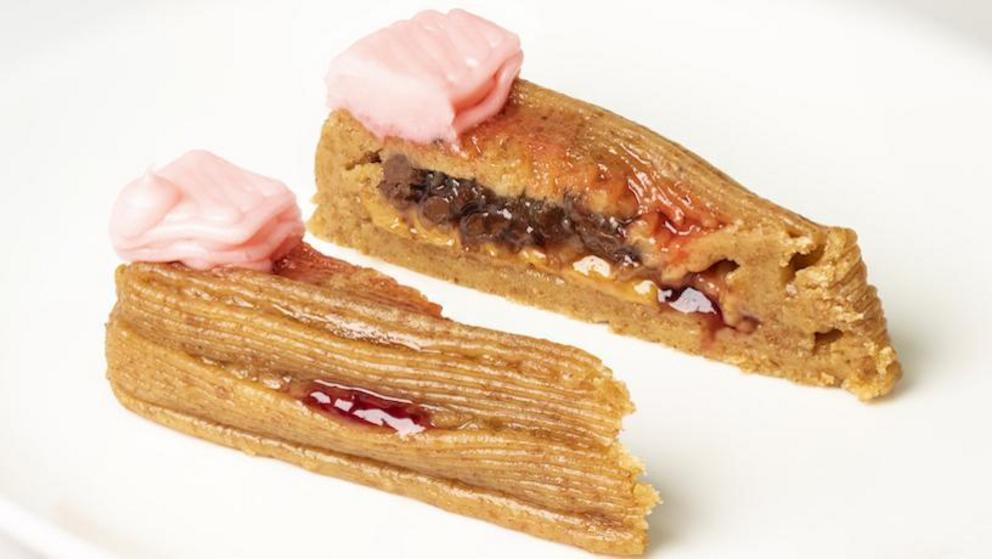Honey, the 3D print--I mean, dessert--is ready!
Columbia Engineers explore the benefits and drawbacks of 3D-printed food technology
Source:
Columbia University School of Engineering and Applied Science
Summary:
Cooking devices that incorporate three-dimensional (3D) printers, lasers, or other software-driven processes may soon replace conventional cooking appliances such as ovens, stovetops, and microwaves. But will people want to use a 3D printer -- even one as beautifully designed as a high-end coffee maker -- on their kitchen counters to calibrate the exact micro- and macro-nutrients they need to stay healthy? Will 3D food printing improve the ways we nourish ourselves? What sorts of hurdles will need to be overcome to commercialize such a technology? Researchers explore the benefits and drawbacks of 3D-printed food technology, cooking 3D-printed food with lasers as part of the system, how 3D-printed food compares to the 'normal' food we eat, and the future landscape of our kitchens.
FULL STORY
Cooking devices that incorporate three-dimensional (3D) printers, lasers, or other software-driven processes may soon replace conventional cooking appliances such as ovens, stovetops, and microwaves. But will people want to use a 3D printer -- even one as beautifully designed as a high-end coffee maker -- on their kitchen counters to calibrate the exact micro- and macro-nutrients they need to stay healthy? Will 3D food printing improve the ways we nourish ourselves? What sorts of hurdles will need to be overcome to commercialize such a technology?
Columbia mechanical engineers are working to address these challenges in Professor Hod Lipson's Creative Machines Lab. In a new Perspective article published today by npj Science of Food, lead author Jonathan Blutinger, a postdoctoral fellow in the lab, explores these questions and more, discussing with Professor Christen Cooper, Pace University Nutrition and Dietetics, the benefits and drawbacks of 3D-printed food technology, how 3D-printed food compares to the "normal" food we eat, and the future landscape of our kitchens.
VIDEO: https://youtu.be/AhVfU71tb2k
Food printing technology has existed since Lipson's lab first introduced it in 2005, but to date the technology has been limited to a small number of uncooked ingredients, resulting in what many perceive as less than appetizing dishes. Blutinger's team broke away from this limitation by printing a dish comprising seven ingredients, cooked in situ using a laser. For the paper, the researchers designed a 3D-printing system that constructs cheesecake from edible food inks -- including peanut butter, Nutella, and strawberry jam. The authors note that precision printing of multi-layered food items could produce more customizable foods, improve food safety, and enable users to control the nutrient content of meals more easily.
"Because 3D food printing is still a nascent technology, it needs an ecosystem of supporting industries such as food cartridge manufacturers, downloadable recipe files, and an environment in which to create and share these recipes. Its customizability makes it particularly practical for the plant-based meat market, where texture and flavor need to be carefully formulated to mimic real meats," Blutinger said.
To demonstrate the potential of 3D food printing, the team tested various cheesecake designs, consisting of seven key ingredients: graham cracker, peanut butter, Nutella, banana puree, strawberry jam, cherry drizzle, and frosting. They found that the most successful design used a graham cracker as the foundational ingredient for each layer of the cake. Peanut butter and Nutella proved to be best used as supporting layers that formed "pools" to hold the softer ingredients: banana and jam. Multi-ingredient designs evolved into multi-tiered structures that followed similar principles to building architectures; more structural elements were needed to support softer substrates for a successful multi-ingredient layered print.
"We have an enormous problem with the low-nutrient value of processed foods," Cooper said. "3D food printing will still turn out processed foods, but perhaps the silver lining will be, for some people, better control and tailoring of nutrition -- personalized nutrition. It may also be useful in making food more appealing to those with swallowing disorders by mimicking the shapes of real foods with the pureed texture foods that these patients -- millions in the U.S. alone -- require."
Laser cooking and 3D food printing could allow chefs to localize flavors and textures on a millimeter scale to create new food experiences. People with dietary restrictions, parents of young children, nursing home dieticians, and athletes alike could find these personalized techniques very useful and convenient in planning meals. And, because the system uses high-energy targeted light for high-resolution tailored heating, cooking could become more cost-effective and more sustainable.
"The study also highlights that printed food dishes will likely require novel ingredient compositions and structures, due to the different way by which the food is 'assembled,' " said Lipson. "Much work is still needed to collect data, model, and optimize these processes."
Blutinger added, "And, with more emphasis on food safety following the COVID-19 pandemic, food prepared with less human handling could lower the risk of foodborne illness and disease transmission. This seems like a win-win concept for all of us."
Journal Reference:
- Jonathan David Blutinger, Christen Cupples Cooper, Shravan Karthik, Alissa Tsai, Noà Samarelli, Erika Storvick, Gabriel Seymour, Elise Liu, Yorán Meijers, Hod Lipson. The future of software-controlled cooking. npj Science of Food, 2023; 7 (1) DOI: 10.1038/s41538-023-00182-6

